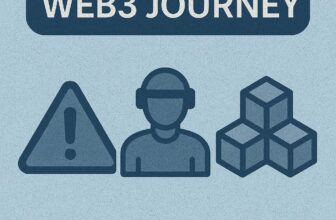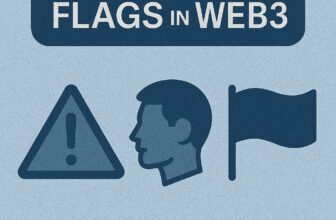-
Level
Beginner
-
Duration
~15–20 minutes
-
Lesson
1 of 8
-
Course
Crypto in Practice
-
Status
✅ Completed
📘 Lesson 1: Wallets – Setup, Security & Recovery
Intro:
A crypto wallet setup is your first real step into decentralized finance. In this lesson, you’ll learn how to create, secure, and recover a non-custodial wallet. You’ll master the process of installing browser-based wallets, storing your seed phrase safely, and practicing personal crypto security. Whether you’re new to Web3 or transitioning from centralized exchanges, getting your crypto wallet setup right is essential for long-term success.
🔍 Overview
In traditional finance, banks control your access to funds. In Web3, you control your keys — and by extension, your assets. This lesson introduces the most fundamental tool in decentralized technology: the crypto wallet. You’ll install a browser-based wallet, configure it securely, and learn how to protect your access with strong operational security (OpSec). These early habits will shape your confidence and security going forward.
📋 What You’ll Need to Know
1. Prerequisites:
Basic familiarity with browsers and installing extensions. No crypto experience required.
2. Target Audience:
Ideal for beginners looking to interact with Web3 applications securely and independently.
📚 Lesson Content
Covering wallet creation, security principles, and real usage tips.
✍️ Content
🔐 What Is a Crypto Wallet?
A crypto wallet is the gateway to owning and interacting with digital assets. It’s a software or hardware tool that allows you to store, manage, and transact with cryptocurrencies. Unlike traditional wallets, it doesn’t store coins physically but rather secures the private keys that prove ownership of assets on a blockchain. There are two primary categories: custodial wallets, which are managed by third parties like exchanges, and non-custodial wallets, which give you full control of your keys and funds.
For anyone entering Web3, understanding the role of a wallet is crucial. Without it, you can’t send tokens, use decentralized applications (dApps), or sign smart contract transactions. A secure and well-managed crypto wallet setup is essential for navigating the decentralized internet safely and confidently.
🛠 Setting Up Your Wallet
Your crypto wallet setup begins by choosing the right wallet application. The most widely used browser extension is MetaMask, while Rabby, Coinbase Wallet, and Trust Wallet offer popular alternatives. These applications are available as browser extensions and mobile apps. Always download them from verified sources to avoid phishing risks.
Once installed, you’ll be prompted to either import an existing wallet or create a new one. Creating a new wallet will generate a seed phrase — a series of 12 or 24 random words that serve as the recovery key to your wallet. It’s critical to store this phrase offline, preferably written on paper and stored securely. Do not take screenshots or save it in the cloud. If someone accesses your seed phrase, they can access your assets.
You’ll also set a strong password to secure your wallet locally on your device. This adds an extra layer of protection, but remember: the password protects your device; the seed phrase protects your wallet across all devices. After this step, your crypto wallet setup is complete and ready for use.
⚠️ Common Traps to Avoid
New users often underestimate how easily wallets can be compromised. A successful crypto wallet setup goes beyond installation — it includes avoiding these common traps:
- Phishing websites: Always verify the URL of wallet providers and dApps. Use bookmarks for trusted sites to avoid fake copies.
- Seed phrase scams: No legitimate team member or support agent will ever ask for your seed phrase. Treat it like the keys to a vault.
- Insecure backups: Don’t store your seed phrase in your phone’s gallery, email, or cloud storage. If your device is hacked, your funds are at risk.
- Malicious approvals: Be cautious when interacting with unknown dApps. Malicious smart contracts can drain your funds if you grant unlimited permissions.
Understanding and avoiding these mistakes is just as important as completing the crypto wallet setup itself.
🌐 Connecting to a Blockchain
After setting up your wallet, it must connect to a blockchain network like Ethereum, Polygon, or Arbitrum. Wallets use RPC (Remote Procedure Call) endpoints to interact with these chains. Most modern wallets auto-configure networks like Ethereum Mainnet, but you can manually add others by inputting the appropriate RPC data.
The connection allows your wallet to read blockchain data (such as your token balance) and sign transactions (like sending ETH or minting NFTs). You should always check that your wallet is connected to the intended chain before transacting — using the wrong network could result in lost funds or failed interactions.
To safely test your setup, try sending a small transaction on a testnet like Goerli or Sepolia. These networks simulate real activity without requiring actual crypto, helping you learn how transactions work and confirm that your crypto wallet setup functions as expected.
🧪 Testing Your Wallet on a Testnet
Once your crypto wallet setup is complete, it’s good practice to test it on a public testnet like Goerli or Sepolia. These are blockchain environments that simulate real transactions using free “test” ETH. This is a great way to practice sending and receiving tokens, connecting to dApps, and exploring gas fees without risk.
To get started, you can request test ETH from a faucet, then try sending a small amount to another test wallet. You’ll quickly gain confidence in how Web3 wallets interact with networks.
✅ Final Checklist Before You Move On
- Installed wallet from official source
- Completed wallet creation and password setup
- Wrote down and safely stored your seed phrase
- Verified connection to the correct blockchain network
- Practiced a test transaction
By completing your crypto wallet setup with care, you now hold the keys to your own digital vault. You’re ready to start sending, receiving, and interacting with the decentralized world securely and independently.
✨ Key Elements
- Installed a browser-based self-custody wallet
- Backed up a recovery phrase securely
- Learned the difference between seed phrases and passwords
- Understood safe habits and how to avoid scams
- Connected wallet to test networks for future interaction
🔗 Related Terms:
seed phrase, self-custody, private key, MetaMask, burner wallet, testnet, wallet extension, Web3 security, recovery phrase, browser wallet
📌 Conclusion
You’ve just completed the single most important step in your Web3 journey: gaining control of your keys. From this point forward, every interaction you make with crypto tools will involve your wallet. Take a moment to double-check your seed phrase storage and test your recovery if needed. In the next lesson, we’ll use this wallet to explore transactions, tokens, and how to read what’s really happening on-chain.
Featured Courses
Capstone: Simulated Web3 Journey
Managing Risks & Red Flags in Web3
Privacy & Transaction Optimization
Using Crypto in Daily Life
NFTs & Web3 Apps in Practice
Introduction to DeFi: Lending, Staking & Yield Explained
Understanding Block Explorers in Crypto
Bridges & Multi-Chain Navigation
Swapping Tokens & Using DEXs
Send, Receive & Track Your First On-Chain Activity
🚀 Ready to Make Your First Transaction?
Now that your wallet is secure and connected, it’s time to interact with the blockchain. In the next lesson, you'll learn how to send and receive tokens safely, and how to verify your actions using a block explorer.
Start Next: Sending & Receiving CryptoJoin the Crypto Hoopoe Community








